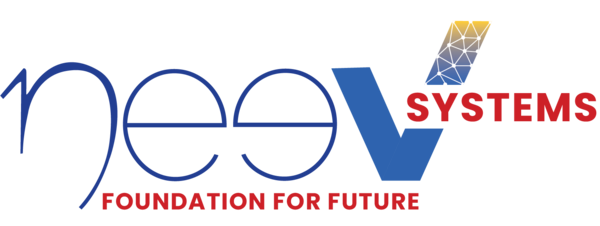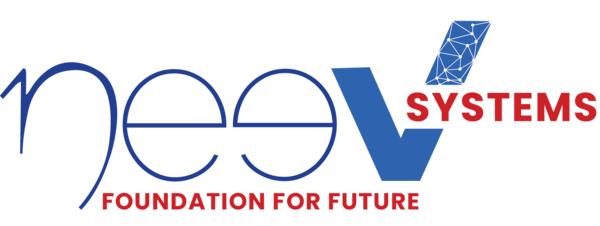Modern organizations find themselves in a constant state of flux, forever seeking new ways to adapt, evolve, and stay ahead of the competition. In this dynamic environment, one thing becomes clear: the ability to streamline operations and foster collaboration is the key to success. The challenge, however, is that new-age digital ecosystems are a tangled web of disparate software applications and siloed data sources and workflows.
Enterprise integration is the antidote to siloed and fragmented workflows and processes. It offers a unified solution to the intricate web of applications, data sources, and workflows that power data-driven organizations.
In this blog post, we will explore the role of enterprise integration in modern organizations, uncover its benefits, and explore why Chief Information Officers (CIOs) should make it a top priority.
What is Enterprise Integration?
In a typical organization, you’ll find multiple software applications and systems, each serving a specific purpose within the business. From customer relationship management (CRM) and enterprise resource planning (ERP) to supply chain management, human resources, finance, and beyond, these systems are the lifeblood of an enterprise’s day-to-day operations. To thrive in today’s hyper-competitive global market, organizations must also grapple with emerging technologies like the Internet of Things (IoT), modern APIs, and the deluge of big data.
However, while all these applications systems devices and data sources exist to serve common business objectives, they often operate in isolation, unable to communicate effectively with each other. This results in information silos – a disjointed tech stack hampers collaboration and the ability to make data-oriented decisions, leading to enterprise-wide operational inefficiencies. Employees using these applications find themselves overwhelmed, navigating through a web of disconnected systems to ensure they run smoothly and provide the required information. Moreover, any updates or changes made in one system must be laboriously replicated in another, leading to duplicative efforts and costly errors. The result is a fragmented technology landscape where critical data is trapped in disparate silos.
As businesses continue to adopt more applications, hosted either on-premise, in the public or private cloud, or outsourced to third-party service providers, data silos grow exponentially. This is where enterprise integration becomes the game changer. Enterprise integrations facilitate near-real-time data transfer, data synchronization, and automated workflows by seamlessly connecting different software applications, systems, and data sources. Essentially, enterprise integration disintegrates data silos to enable streamlined operations and collaborative excellence.
Why is Enterprise Integration Important?
Enterprise integration binds an organization’s diverse systems, applications, tools, and workflows, enabling real-time information exchange. This further allows business leaders to gain deep insights into processes and customers, make actionable decisions, and adopt agile practices to improve overall efficiency.
Nearly 83% of organizations consider enterprise integrations one of their top five business priorities for the next two years. In an era of rapid change and digital disruption, enterprise integration is more than a convenience – it’s a strategic imperative, empowering businesses of all sizes to thrive in the face of continuous transformation.
- Optimizing business processes
Fragmented and disconnected processes act as bottlenecks, hindering daily operations and creating inconsistent user experiences. Enterprise integration dismantles these barriers by providing a cohesive framework through which companies can connect, optimize, and automate internal processes.
The result? Streamlined workflows, improved operational efficiency, and a consistent user experience that spans all digital touchpoints. This not only accelerates task completion but also enhances the workforce’s productivity.
- Gaining 360-degree customer insights
Customer data is a valuable asset, but it is often spread across disparate sources/applications and in multiple formats. Enterprise integration transcends these data silos, creating a single source of truth that all teams across the organization can leverage for their respective use cases. This approach delivers a comprehensive, 360-degree view of the company’s target customers.
- Transitioning from legacy to new-age systems
The pace of digital transformation demands an adaptable IT landscape that seamlessly merges legacy systems with cutting-edge cloud technologies. Enterprise integration adopts an API-first approach, bridging the gap between the old and the new. This approach enables companies to extract real-time data from legacy systems, ensuring the continuity of critical business processes. Simultaneously, it supports the adoption of new business models and the modernization of IT infrastructures.
- Capitalizing on new opportunities in the API Economy
The API economy is a burgeoning landscape where businesses leverage application programming interfaces to unlock new opportunities. Enterprise integration enables companies to harness the power of APIs to construct an ecosystem of buyers, partners, and suppliers. This ecosystem facilitates the seamless exchange of information, creating unique services and business models. By tapping into the API economy, organizations can differentiate themselves in a highly competitive market, fostering innovation and expanding their reach in ways previously unattainable.
- Realizing ROI and Cost Savings
Enterprise integration initiatives not only enhance operational efficiency and customer experiences but also deliver substantial return on investment (ROI) and cost savings. Organizations that implement integration strategies effectively see reductions in operational costs, increased revenue opportunities, and improved resource allocation.
- Operational Cost Reduction: Integration streamlines processes, eliminates redundancies, and reduces manual interventions, leading to significant operational cost savings.
- Revenue Growth: Improved customer insights, agile decision-making, and enhanced customer experiences drive revenue growth, directly impacting ROI.
- Resource Allocation: By redirecting IT integration budgets from maintenance and training toward high-value initiatives, organizations optimize resource allocation and boost overall efficiency.
A well-mapped integration strategy can yield significant results and meaningful economic efficiencies across operations. Enterprise integrations can drive time-consuming integrations to innovate solutions within weeks rather than months. Additionally, IT leaders can redirect a substantial portion of the IT integration budget – previously allocated to maintenance and training (nearly 35%) – towards more high-value initiatives. This reinforces the pivotal role of enterprise integrations in streamlining operations and optimizing resource allocation.

Break Free from Data Silos
Challenges of Enterprise Integrations
Planning and implementing enterprise integrations require careful consideration of an organization’s unique needs and integration goals. While some organizations consider implementing integrations in-house via DIY or custom integration methods, many others outsource it to a reliable AMS vendor.
After all, enterprise integrations come with their inherent challenges:
- Complexity: Bringing together different systems with varying data formats, protocols, and technologies is time-consuming and complicated. Managing the diverse requirements of these systems and ensuring they can work together can be challenging, especially if the team managing and maintaining integrations isn’t well-versed in those technologies.
Pro Tip: Before diving into integration, conduct a thorough assessment of the complexity involved. Identify potential roadblocks, technology gaps, and specific integration requirements.
- Data Consistency: Keeping data consistent and accurate as it flows through integrated systems is an ongoing challenge. Inconsistencies and inaccurate data can lead to mistakes and wrong decisions.
Pro Tip: To maintain data consistency, implement data validation checks at key integration points. These checks can help identify and rectify inconsistencies in real time.
- Security and Privacy: Integrating systems can potentially expose sensitive data to security risks. Ensuring that data remains safe during integration is crucial because breaches can lead to serious financial consequences, even displacing the customer’s trust in the company.
Pro Tip: Prioritize Data Encryption and implement strong encryption mechanisms for data transmission and storage. Utilize access controls and authentication to ensure that only authorized personnel can access sensitive information.
- Scalability: As an organization expands and deploys more systems, the integration solution should be able to scale with the growing applications. It must handle increasing data loads and system interactions without degrading system/platform performance.
Pro Tip: When designing your integration solution, anticipate future scalability needs. Ensure that the architecture and technology chosen can handle increased data loads and system interactions as your organization grows.
- Legacy Systems: Many organizations have older, legacy systems that weren’t built with modern integration in mind. These systems can be particularly challenging to integrate due to their outdated technology and lack of documentation and support for standard integration methods.
Pro Tip: Legacy systems may present challenges, but consider exploring modernization options. Assess whether it’s feasible to update or replace outdated components with more integration-friendly technology.
Overcoming these challenges demands partnering with a reliable IT services provider with extensive industry experience and a skilled team. A vendor who can understand your organization’s needs and the right technology choices can smoothly handle and support your integration needs and the inherent complexities.
Streamline Enterprise Integrations With Neev: Your Reliable IT Services Partner
Ensuring top-notch integration services is a hallmark of Neev Systems. Our experts are well-versed in multiple integration platforms, including Oracle, ServiceNow, Incorta, Snowflake, Mulesoft, and Boomi, to name a few. Neev’s approach is grounded in the best practices that drive successful enterprise integration, facilitating real-time and consistent data views across systems and applications:
- Platform-Centric Integration: We begin with a platform-based approach that caters to various facets of enterprise connectivity, accommodating a diverse array of integration use cases. This approach spans applications, processes, data, usage, sensors, and more, supporting on-premise, cloud, and hybrid ecosystems.
- API-First Integration: APIs serve as foundational building blocks within the integration platform, enabling the seamless integration of people, processes, and systems. This allows businesses to transform digital assets into new revenue-generating models through versatile monetization plans.
- Democratized Integration: Neev empowers all users by democratizing integration. By providing intuitive, no-code build experiences, individuals from various backgrounds and technical proficiencies can update and build integrations, reducing dependence on dedicated developers.
- Smart Lifecycle Management: We emphasize smart lifecycle management as an integral part of the integration strategy. This includes comprehensive plans encompassing access control, change management processes, rules for extending integrations, and system credentials and data encryption management. In hybrid deployments, lifecycle management extends to pushing patches and upgrades to runtime engines, whether on-premise or in the cloud.
- Ongoing Improvement with Analytics: Neev leverages integration activity analytics to glean insights from data flow across the organization, departments, and endpoints. With the rise of user-led integration, predictive intelligence recognizes integration patterns, enabling better decision-making and more efficient operations.
Neev Systems takes pride in adhering to these best practices to ensure that their clients receive the highest quality integration services for their evolving business needs.
Real-world example:
Neev Systems successfully deployed an integration solution for Guardant Health, revolutionizing their reimbursement appeal process. By meticulously designing and implementing automated workflows and processes, Neev Systems streamlined the appeal submission process, greatly improving both efficiency and accuracy. This integration also introduced the flexibility to send appeals via fax when required, further enhancing operational efficiency. Consequently, automating the appeal process not only boosted revenue from tests but also drastically minimized the need for manual intervention.
The Future of Enterprise Integration
The future of enterprise integration is marked by promising horizons, driven by technological advancements and the evolving demands of businesses. Here are key trends that are shaping the path forward:
- Hybrid and Multi-cloud Integration: In response to the increasing reliance on a mix of on-premises and cloud-based solutions, integration platforms are evolving to connect these diverse environments seamlessly. They are dedicated to ensuring the fluid synchronization of data and processes across hybrid and multi-cloud setups, fostering a more unified and efficient ecosystem.
Example: By seamlessly integrating on-premises legacy systems with cloud-based applications, organizations can avoid costly system replacements and realize significant cost savings. The ability to scale resources up or down in the cloud as needed also contributes to more efficient resource allocation.
- AI and Machine Learning Integration: The next generation of enterprise integration platforms will integrate artificial intelligence (AI) and machine learning capabilities. This integration will automate tasks such as data mapping, pattern detection, and the prediction of potential integration challenges, enhancing the efficiency and intelligence of the integration process.
Example: AI-driven integration can automatically detect anomalies and data inconsistencies, reducing errors and enhancing data quality. This, in turn, leads to more accurate insights and better decision-making, contributing to increased ROI.
- IoT Integration: As the Internet of Things (IoT) ecosystem continues its rapid expansion, enterprise integration approaches and platforms are adapting to facilitate connections between IoT devices, sensors, and data streams with core business systems. This will allow businesses to harness the power of IoT data for improved decision-making and operational insights.
Example: IoT integration can enable predictive maintenance, allowing organizations to proactively address equipment issues before they lead to costly breakdowns. This results in reduced maintenance costs and increased operational efficiency.
- Low-Code/No-Code Integration: The decentralization of integration continues through the adoption of low-code and no-code platforms. These platforms empower non-technical users to create and manage integrations, accelerating development cycles and reducing the reliance on specialized IT staff. This shift democratizes integration, making it accessible to a broader range of professionals within an organization.
Example: With low-code/no-code integration, business analysts and non-technical staff can quickly build and deploy integrations without heavy IT involvement. This accelerates project delivery, reduces IT costs, and allows organizations to realize ROI faster.
The future of enterprise integration platforms is marked by adaptability, intelligence, and accessibility, aligning with the ever-changing landscape of modern business needs and technological capabilities.
To conclude…
Enterprise integration is a critical driver of digital transformation. By adhering to best practices and embracing emerging trends, businesses can seize opportunities, streamline operations, and empower a broader spectrum of users. The journey from silos to savings is an exciting one, and with the right leadership, CIOs can guide their organizations toward the full potential of enterprise integration.

Take the Next Step Toward Efficiency

Ansar Syed
With 10+ years of experience as an integration architect, Ansar specializes in delivering complex business solutions through strategic planning, custom designs, and process automation. He collaborates closely with stakeholders to enable seamless business processes and exceptional outcomes using integration tools.


